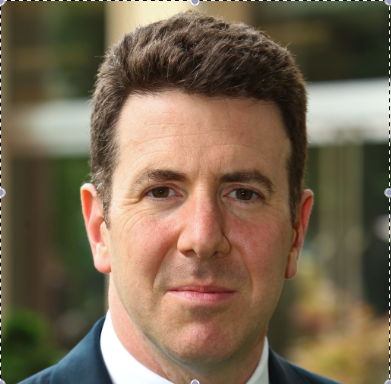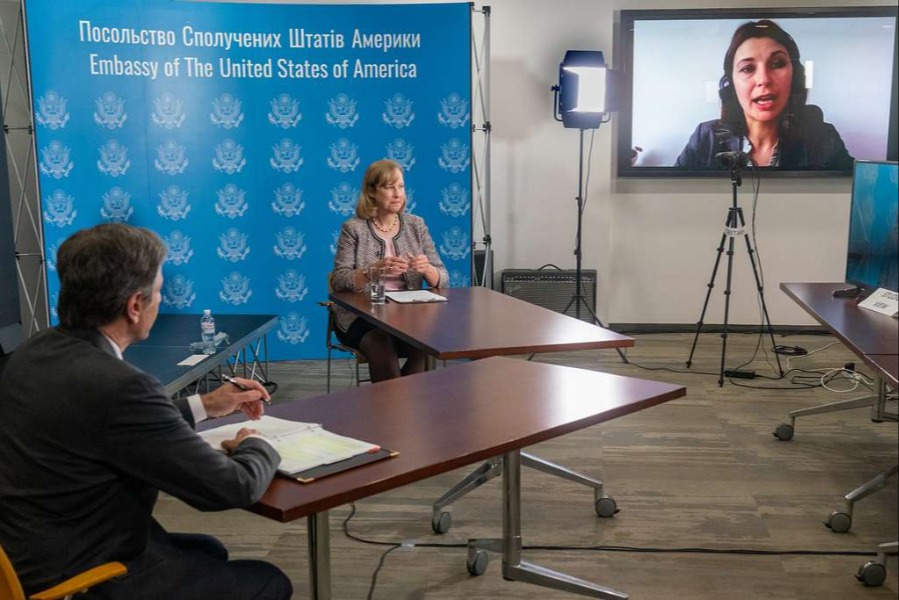Evaluating Trump’s Options in Syria
U.S. policy in Syria has failed, but it’s not clear if the new Trump administration can make things better—and some of the options officials are considering would clearly make things worse.
Published by The Lawfare Institute
in Cooperation With

U.S. policy in Syria has failed, but it’s not clear if the new Trump administration can make things better—and some of the options officials are considering would clearly make things worse.
Although the Islamic State has suffered numerous setbacks, the scale and scope of the killing in Syria seems to grow every year, with more than 450,000 Syrians now dead and more than 13.5 million either internally displaced or forced to become refugees. The regime of Bashar al-Assad appears ascendant, while the opposition is increasingly more radical, with the Islamic State and the Al Qaeda-linked Jabhat Fatah al-Sham playing important roles. Former Secretary of State John Kerry’s effort to bring about a ceasefire failed, and subsequent Russian efforts appear likely to meet with at best limited success.
It’s reasonable, if cold-blooded, to shrug and ask how this affects America. Historic U.S. interests in the Middle East, after all, are barely affected. Syria has little oil, lacks nuclear weapons, and even before the civil war posed at most a weak military threat to Israel’s security. Trump has given little indication that he cares about the humanitarian carnage of the war, and his disdain for most allies suggests that their fears of spillover and regional rivalries will not deeply affect his thinking.
It is only the risk of terrorism emanating from Syria, where the Islamic State is based, that poses an immediate threat to U.S. interests, and that is clearly the one Syria issue that engages most Americans. Obama tried to walk this line by criticizing Assad but focusing U.S. military efforts against the Islamic State, which saw both America and the Syrian dictator as its enemy (although frankly almost the entire world is its enemy).
Based on his campaign, initial appointments, and first steps as President, it is difficult to anticipate where Trump will go on Syria. Indeed, he is putting out contradictory signals—which, to be fair, is a problem common in most new administrations and even many experienced ones. During the campaign he repeatedly criticized “stupid” wars, notably the invasion of Iraq, and questioned the need to back allies. He pointed out that the Syrian opposition is a mess and questioned whether the moderate opposition is truly moderate. He has long called for getting tough on the Islamic State and working with Russia, which backs Assad’s regime, but he also opposes Iran, which also backs Assad’s regime. But in a recent pronouncement, Trump abruptly promised the U.S. “will absolutely do safe zones in Syria” without specifying what that actually meant. He greets with disdain humanitarian gestures such as providing aid or accepting refugees.
One option, of course, is to do nothing about Syria—and perhaps be more open about it than Obama was. Obama always proceeded cautiously, fearing a quagmire like the one that trapped the United States after the 2003 invasion of Iraq. However, he also talked in moral language about the conflict, while probably also missing opportunities to intervene effectively. Trump is facing a similar quandary—indeed a harder one. For Trump, and for many Americans, the Iraq war seemed to prove that intervention in the Middle East is costly, complex, and often counterproductive. Yet terrorism is real, and as the candidate who swore to keep us safe, Trump can’t be seen as ignoring any terrorism danger. So, like Obama, Trump may want to avoid the war and save U.S. firepower for the Islamic State.
The problem with this balancing act is that terrorism and civil wars are linked, and it’s hard to fight one while ignoring the other. The Islamic State feeds off of civil wars: it helped create the Iraqi civil war and thrived as it raged, and it found new life as the Syrian civil war spread. This should be no surprise. Hizballah emerged out the Lebanese civil war, and Palestinian groups also thrived on civil conflict. Even though the Islamic State is being hit hard, it has made plans to go underground should it lose all its territory, as it did last time. So without solving the question of governance and territorial control, the group and other terrorist organizations are not likely to go away, while the war itself will prove a rallying cry to bring in new recruits. Terrorism in the region and the flow of refugees is likely to continue, and neighboring states will escalate their proxy wars. All this may mean little to Trump—as long as the terrorism doesn’t hit closer to home and he doesn't need allies’ help in other areas.
Another approach is to “bomb the shit out of them,” as our President memorably phrased it on the campaign trail. The United States Air Force has a remarkable ability to attack fixed targets like buildings and larger mobile ones, such as Islamic State heavy artillery or oil transport trucks. In addition, in the years since 9/11, drones and other air assets are used to kill suspected terrorist leaders. Even if the terrorists successfully hide, it’s far harder for them to operate when constantly keeping their heads down.
Air power, however, has many limits. To be most effective, it needs to coordinate with forces on the ground. With effective ground forces, the adversary can’t simply disperse and hide—the ground forces will root them out. Ground forces can also offer more precise targeting intelligence for air strikes. But most important, it is the ground forces that will change conditions on the ground, providing security and enabling local governance while preventing the terrorists from coming back. Without the ground troops, another local actor will fill the void—perhaps someone even worse than the current adversaries. If we want to eradicate the terrorists for good as Trump, has promised, air power is not enough.
One option that was off the table under Obama (and, indeed, seemed inconceivable to most observers only a year ago) is cooperating with the Russians. This can be done directly by sharing targeting information with Moscow, conducting joint bombing runs, and otherwise working together as military partners. Or it can be done less visibly simply by ending support for the anti-Assad opposition and, in so doing, by increasing Moscow’s relative influence and the strength of the Assad regime, its partner.
Russia is not known for caring about civilian casualties or otherwise exercising restraint in its military operations. So any U.S. partnership will carry a humanitarian taint. In addition, the Assad regime is widely loathed by Sunni Muslims, and effectively taking its side would further put the United States on the wrong side of regional opinion, as well as that of anti-Assad regimes like Saudi Arabia. Helping Russia and helping Assad also helps Iran—Syria’s closest ally—which has provided substantial financial and military support for the Assad regime. A close alliance with Russia to fight the Islamic State thus could backfire, making the terrorism problem worse and hindering America’s regional position.
The recent proposal to establish safe zones, formerly the favored position of Hillary Clinton, was less expected considering Trump’s criticism of it during the campaign. As with all of these options, it is difficult to assess when the specific details remain unclear. In theory, establishing safe zones simply means designating an area, deploying a combination of U.S. and allied ground and air forces to protect that area from combatant parties, and providing aid to civilians. The difficulty is determining what territory is effectively seized, whose forces will be used (particularly on the ground), and the nature of the mandate (i.e. how much force can be used and to what ends). In addition, if the zone is a base for anti-Assad and anti-Islamic State opposition, then both will target it, and in any event, the zone needs to be heavily guarded and policed to secure the people there. The diplomatic and geopolitical considerations alone are incredibly complex as a consequence of the presence of Russian, Iranian, and Turkish forces, besides the most basic consideration of directly intervening in an ongoing, complicated civil war. The Trump team will have no lack of proposals from humanitarian-oriented buffer zones to more ambitious plans seeking a confederal political settlement to the war. Yet to do even a basic zone would require thousands of ground troops and needs to ensure that U.S. and Russian air forces deconflict. And that doesn’t answer the question of who will administer the safe zones, a question that will become more and more important as the zones endure and become mini de facto states. A safe zone, far from being a prudent middle course, could actually make things worse, achieving little but requiring considerable resources and putting the United States unwittingly on the road toward greater intervention.
Although several of the President’s advisors appear to recognize the limits of military force and the diplomatic—to say nothing of the moral—difficulties of allying with Russia and Syria, it is not clear what the President and his core group of advisors in the White House think. In his rhetoric, at least, the President has appeared to dismiss the difficulties and tensions in any policy, contending that the United States can eat its cake and have it too.
It is an open question whether the United States could have intervened effectively in Syria if it had seized opportunities when Assad was first flailing in 2011 or before the civil war became massive in 2013. In 2017, however, there are no good options, only less bad ones. Trump’s domestic political realities also make his options even harder. The President has read Americans’ mood correctly: we don’t want to get mired in yet another swamp in the Middle East, but at the same time, we do want to make sure the Middle East is not a platform for terrorist attacks on the United States. Both intervening and not intervening can easily be portrayed as failures as a result, and the public may prove unforgiving regardless of the direction Trump goes.
So Team Trump has a tough task before it, and those of us hoping for success in Syria are likely to be disappointed.





